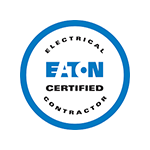Michigan residents are no strangers to inclement weather. From flooding rainstorms to heavy snows, a variety of weather events can potentially leave your family in the dark. While losing power is never fun or convenient, a generator is a great option to help smooth over those dark days.
Planning for a new generator doesn’t have to be difficult. Take these few simple steps to help your installer provide the best option for your home.
1. Know Your Specific Needs
Before getting started, take a step back and consider your reasons for purchasing a generator. Do you want to minimize the disruption that a loss of power has on your life? Are you looking to run only a few necessary household items? Do you have a loved one or pet with special needs that may be in danger during a prolonged power outage?
During this process, it may be helpful to list the specific household items that you want to run during a power outage. Break this list up into devices that are essential and devices that would be nice to have. Cheap consumer electricity monitoring devices are great tools to help you determine the total power requirements of everything you will be running from your generator.
Likewise, you should decide the maximum amount of time you intend to use your generator. Some families rely on generators to provide power throughout an entire outage, while others may only run theirs intermittently and for specific purposes. Your intended duty cycle will likely impact your choice of generator as much as your overall power requirements.
2. Understand Your Load Requirements
Once you’ve made a rough estimate of your power requirements, you may feel as if you’re ready to start sizing up generators. Not so fast! There’s more to picking a generator that will fully meet your load requirements than just comparing maximum power output.
When you look at the specifications for a generator, pay special attention to both the rated and maximum output. A helpful way to think about this is the difference between cruising speed and top speed. While a generator can supply its maximum output for a short time (usually about a half-hour), the rated output is the safe capacity for prolonged usage.
Rated runtime matters, too. For portable generators, the rated runtime is about how long you can expect to operate your generator on a full tank of gas while at or below rated output. Working with a reduced load can potentially extend this runtime, but frequently requiring the generator to operate at its maximum output will reduce it considerably.
3. Think Carefully About Duty Cycles
Your generator’s duty cycle is the length of time that it will run without interruption. For a portable generator, the duty cycle cannot exceed the rated runtime. Standby generators offer significantly longer runtime, based on their fuel source and tank. A natural gas standby generator supplied by a utility company can theoretically run indefinitely.
Remember that initial evaluation of your generator needs? Carefully consider if you intend to run your generator for more than the 12- to 18-hour duty cycles typical in portable units. If so, then a standby generator with an ample supply tank or a direct utility connection will be a better fit for your needs.
Once you have a good feel for your overall generator requirements, consult with a qualified expert to choose the generator that’s best for your home. Oak Electric can help you to size, select, and install the perfect generator to keep the lights on. Schedule an appointment with us when you’re ready to protect your home from the worst the weather can throw at it.






















